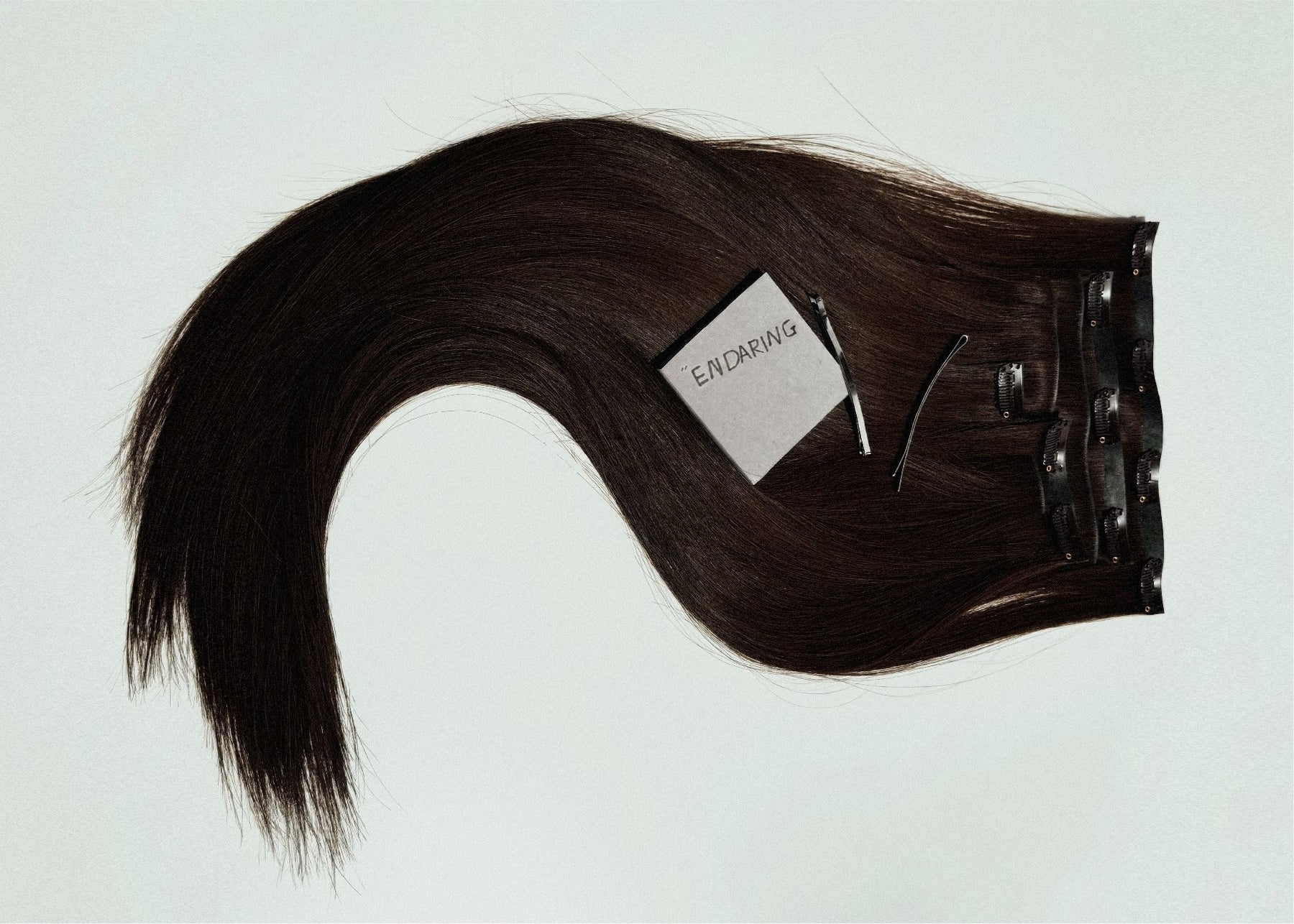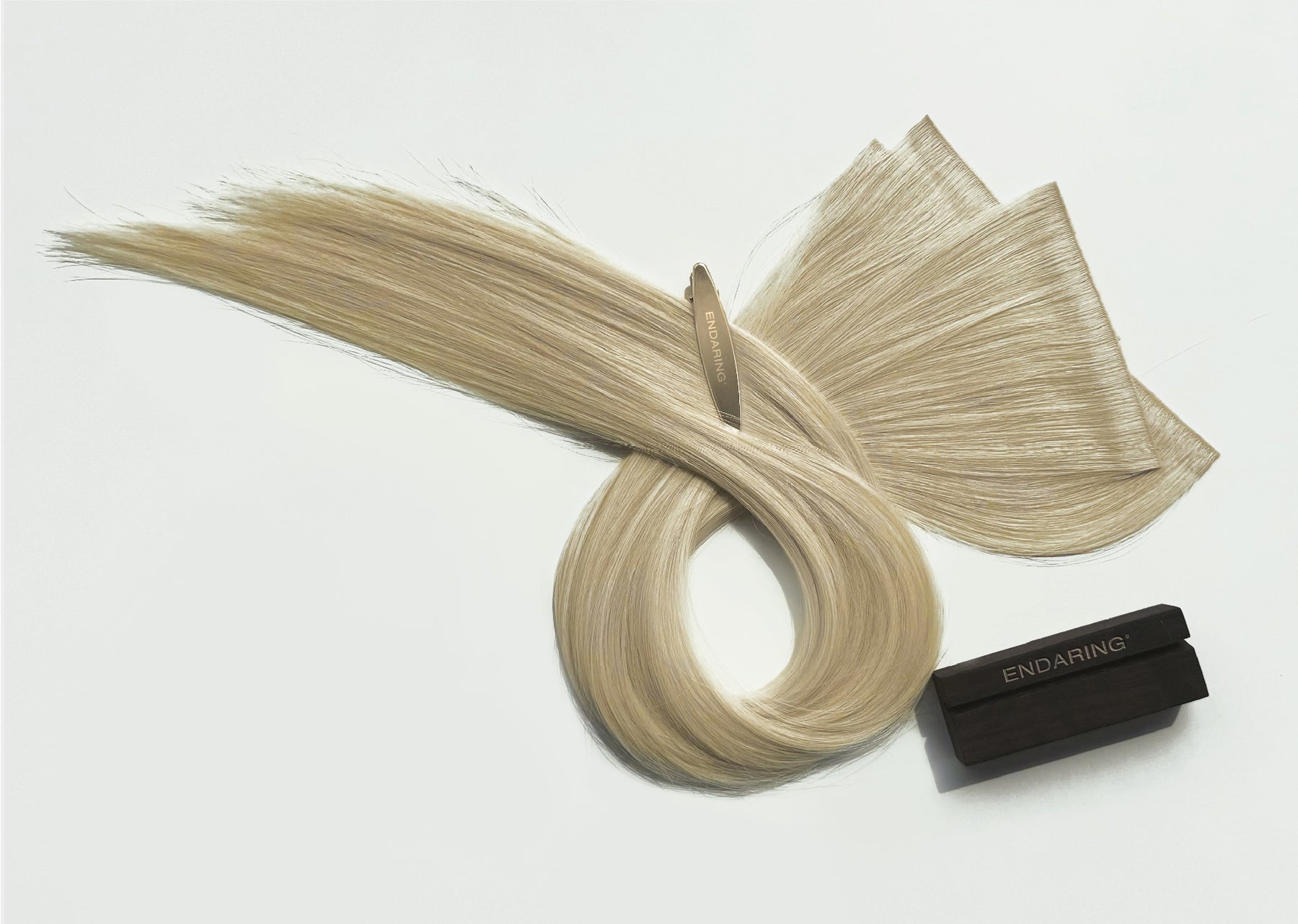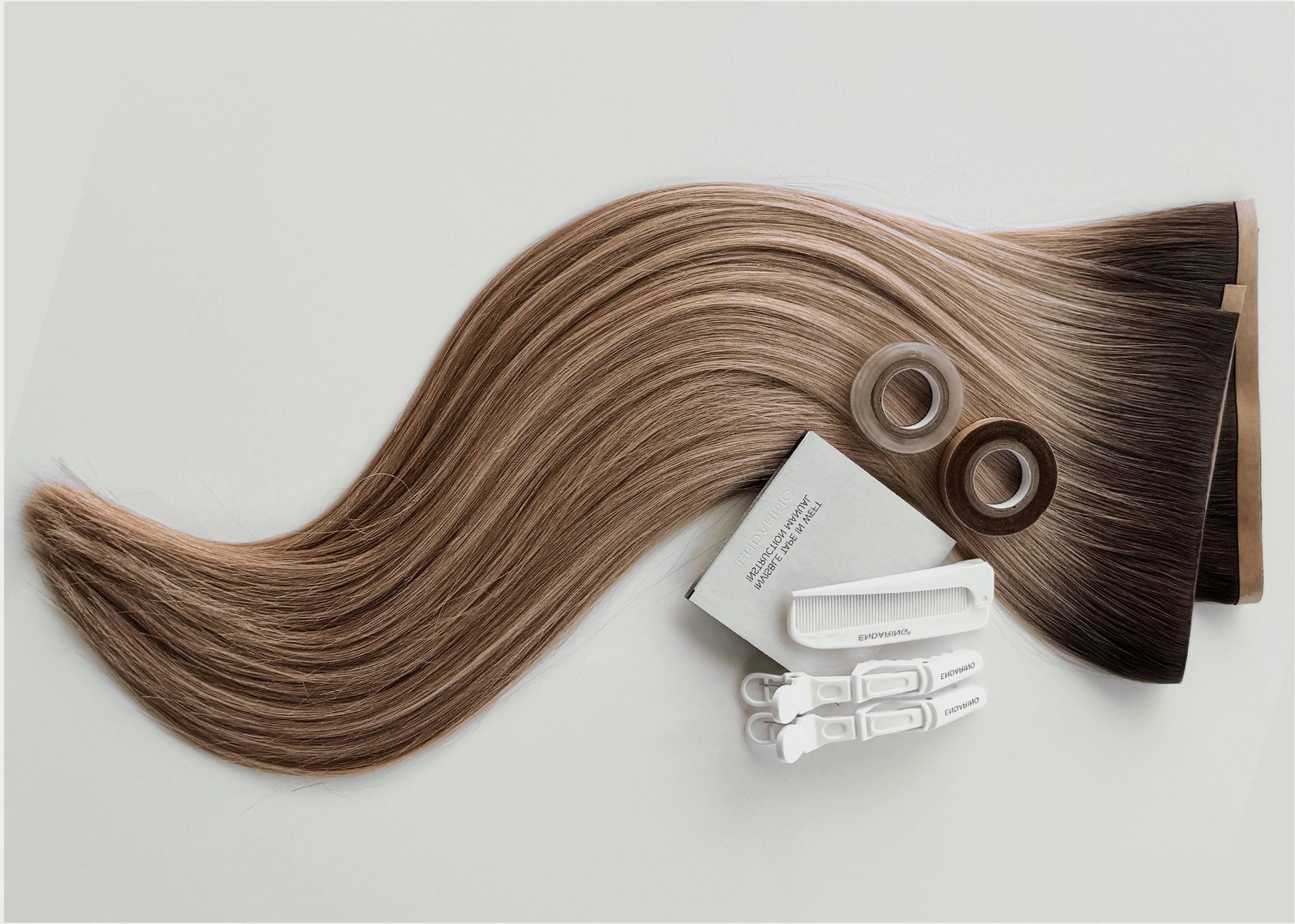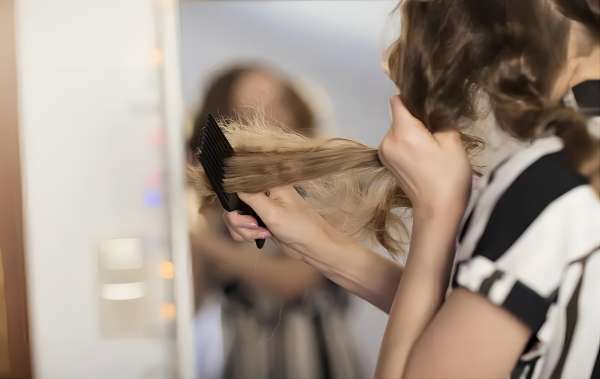New moms (and soon-to-be moms)! Let’s chat about something many of you have been asking: postpartum hair loss & When postpartum hair loss stops. It’s one of those things no one warns you about, right?
1. What Causes Postpartum Hair Loss: Understanding the Basics
- Hormonal Changes During Pregnancy: During pregnancy, increased estrogen levels prolong the growth phase of hair follicles (anagen phase). This results in thicker, fuller hair as more follicles remain in the active growth stage.
- Postpartum Estrogen Drop: After childbirth, estrogen levels plummet rapidly. This sudden decrease signals hair follicles to transition from the growth phase to the resting phase (telogen phase). Normally, about 85-95% of your hair is in the growth phase at any given time, but this percentage can increase significantly during pregnancy.
- Telogen Effluvium: Postpartum hair loss is primarily attributed to telogen effluvium, a common and temporary condition where a larger number of hairs than usual enter the telogen (resting) phase simultaneously. This leads to increased shedding of hair, often noticeable when brushing, showering, or just throughout the day.
- Temporary Nature: It’s crucial to reassure readers that postpartum hair loss is a normal physiological response to the hormonal changes that occur after childbirth. It typically starts around three months postpartum and can last for several months thereafter. Importantly, it's not a permanent condition and usually resolves on its own as hormone levels stabilize.
- Hair Growth Cycle: Understanding the hair growth cycle helps contextualize postpartum hair loss. Hair follicles go through three phases: anagen (growth), catagen (transitional), and telogen (resting). During pregnancy, fewer hairs enter the telogen phase due to elevated estrogen levels, resulting in thicker hair. After childbirth, the sudden drop in estrogen causes more hairs to enter the telogen phase simultaneously, leading to increased shedding.
- Emotional Impact: Acknowledging the emotional impact is also important. Many new mothers experience distress or anxiety over postpartum hair loss, fearing it may not regrow or could indicate a health problem. Providing reassurance and accurate information can alleviate concerns and help them navigate this temporary phase with confidence.
2. The Timeline of Postpartum Hair Loss: When to Expect Changes
- Onset of Hair Shedding: Postpartum hair loss typically begins around three months after childbirth. This delay occurs because it takes time for the body's hormone levels to adjust after giving birth. During this initial phase, many women notice increased hair shedding, often when brushing, showering, or touching their hair.
- Duration of Shedding Phase: The shedding phase can last varying lengths of time for different individuals. While some women may experience noticeable shedding for about three months, others might continue to shed hair for up to six months postpartum. Factors such as genetics, overall health, and how the body responds to hormonal changes can influence the duration of this phase.
- Normalization of Hair Growth: Hair growth patterns typically begin to normalize by the time the baby is around one year old. This means that by the end of the first year postpartum, many women see a significant reduction in hair shedding and notice that their hair starts to regain its pre-pregnancy thickness and volume.
- Variability in Experiences: It's essential to emphasize that every woman's experience with postpartum hair loss can vary. While the timeline outlined above is common, some women may notice hair loss starting earlier or later than three months postpartum. Similarly, the duration of shedding can be shorter or longer than the typical three to six months. Providing this information helps set realistic expectations and reassures readers that individual variations are normal.
- Managing Expectations: By understanding the typical timeline of postpartum hair loss, new mothers can better prepare themselves for what to expect during this period. Knowing that hair shedding is temporary and part of the body's natural response to childbirth can alleviate concerns and allow women to focus on self-care and adjusting to life with a new baby.
3. Nutritional Tips to Help Postpartum Hair Regrowth
- Role of Nutrition in Hair Health: A balanced diet plays a crucial role in promoting healthy hair growth, especially during the postpartum period when the body is recovering from childbirth and hormonal changes. Nutrients such as vitamins, minerals, and proteins are essential for nourishing hair follicles and supporting regrowth.
- Specific Nutrients Beneficial for Hair: Highlighting specific nutrients:
- Iron: Important for transporting oxygen to hair follicles. Sources include lean red meat, poultry, fish, beans, and fortified cereals.
- Zinc: Supports hair tissue repair and growth. Found in foods like nuts, seeds, whole grains, and lean meats.
- Vitamins A, C, D, and E:
- Vitamin A: Helps produce sebum, which keeps the scalp moisturized. Sources include sweet potatoes, carrots, and spinach.
- Vitamin C: Aids in collagen production, essential for hair structure. Found in citrus fruits, berries, and bell peppers.
- Vitamin D: Helps regulate hair follicle cycling. Sunlight exposure, fortified dairy products, and fatty fish are sources.
- Vitamin E: Protects hair from oxidative stress. Nuts, seeds, and leafy greens are good sources.
- Biotin: Supports keratin production, a key component of hair. Found in eggs, nuts, whole grains, and bananas.
- Recommended Foods: Encourage consumption of foods rich in these nutrients to support postpartum hair health:
- Leafy Greens: Spinach, kale, and Swiss chard are rich in iron, vitamins A, C, and E.
- Eggs: Provide biotin and protein, essential for hair strength and growth.
- Berries: High in vitamin C and antioxidants, which promote scalp health.
- Nuts and Seeds: Zinc, vitamin E, and omega-3 fatty acids support hair growth.
- Fish: Rich in omega-3 fatty acids, which nourish hair follicles and support scalp health.
- Importance of Hydration: Mention the significance of staying hydrated for overall hair and scalp health. Water helps maintain moisture levels in the scalp and supports the transport of nutrients to hair follicles.
- Consulting Healthcare Provider: Advice to consult their healthcare provider, especially if considering supplements. A healthcare professional can assess individual nutritional needs and recommend safe supplementation, particularly important for breastfeeding mothers to ensure the safety of both mother and baby.
If a postpartum mom needs to attend some impromptu events, she can use some external tools to decorate her hair, such as invisible clip-ins, which are thin/fine hair friendly and can effectively deal with postpartum issues such as wide hair seams, receding hairline, and low hair volume. Because there is no shiny band can be worn better close to the roots.
4. Hair Care Routines to Manage Postpartum Hair Loss
- Using Gentle Shampoo and Conditioner:
- Shampoo: Recommend using a mild, sulfate-free shampoo that cleanses the scalp without stripping natural oils. Look for ingredients like argan oil or coconut oil, which can nourish and moisturize the scalp.
- Conditioner: Use a conditioner that adds moisture and helps detangle hair. Apply conditioner mainly to the lengths and ends, avoiding the scalp to prevent weighing down fine hair.
- Avoiding Tight Hairstyles:
- Discourage styles like tight ponytails, braids, or buns that can put stress on the hair shaft and lead to breakage. Opt for looser styles or use accessories like soft scrunchies or hair clips to secure hair without pulling.
- Using a Wide-Tooth Comb to Detangle:
- Recommend using a wide-tooth comb or a detangling brush to gently remove knots and tangles from wet hair. Start detangling from the ends and work your way up to minimize breakage, especially when hair is more prone to breakage postpartum.
- Limiting the Use of Heat Styling Tools:
- Advise minimizing the use of heat styling tools such as hair dryers, straighteners, and curling irons. Heat can weaken hair and contribute to further damage and breakage. If heat styling is necessary, use a heat protectant spray and keep temperatures moderate.
- Benefits of Regular Trims:
- Emphasize the importance of regular trims (every 6-8 weeks) to remove split ends and prevent them from traveling up the hair shaft, causing more damage. Trimming also helps maintain the shape and overall health of hair, making it appear thicker and more vibrant.
- Hair Masks or Treatments:
- Masks enriched with ingredients like keratin, protein, or argan oil can help restore moisture, repair damage, and improve overall hair resilience. Recommend applying a mask once a week or as needed, depending on hair condition.
5. Common Myths About Postpartum Hair Loss: Separating Fact from Fiction
- Breastfeeding and Hair Loss:
Clarify that breastfeeding itself does not cause postpartum hair loss. Instead, hair loss is primarily attributed to hormonal changes after childbirth, particularly the drop in estrogen levels. Reassure that breastfeeding is a natural and healthy process that does not directly impact hair health.
- Hair Loss as a Health Problem:
Emphasize that postpartum hair loss is a normal physiological response to childbirth and hormonal fluctuations. It does not indicate an underlying health problem or deficiency in most cases. Stress that while hair shedding can be distressing, it is temporary and typically resolves on its own over time.
- Speed of Hair Regrowth:
Address misconceptions about how quickly hair should regrow after postpartum hair loss. Explain that hair growth rates vary among individuals, and regrowth after hair shedding may take several months to become noticeable. Encourage patience and focus on overall hair health rather than expecting immediate results.
6. When to See a Doctor for Postpartum Hair Loss Concerns
While hair shedding is normal, excessive hair loss or the presence of bald patches might warrant a visit to the doctor.
7. Coping with Postpartum Hair Loss: Emotional and Mental Well-Being
Certainly! Here’s a more detailed explanation addressing the emotional and mental impact of postpartum hair loss:
- Emotional Impact of Hair Shedding:
- Acknowledge that experiencing significant hair shedding postpartum can be emotionally challenging. Many new mothers may feel distressed or anxious as they notice changes in their hair volume and texture, which can impact self-esteem and body image.
- Temporary Nature of the Condition:
- Reassure that postpartum hair loss is a temporary condition. Understanding that it's a natural part of the postpartum experience can help alleviate anxiety and provide perspective during this phase.
- Seeking Support from Friends and Family:
- Encourage new mothers to reach out to their support network, including friends and family members. Sharing concerns about postpartum hair loss can provide emotional support and reassurance that they're not alone in experiencing these changes.
- Exploring Self-Care Practices:
- Discuss the importance of incorporating self-care practices into daily routines. This may include indulging in activities that promote relaxation and self-nurturing, such as taking warm baths, practicing gentle yoga or meditation, or engaging in hobbies that bring joy and distraction.
- Stress Management Techniques:
- Highlight the role of stress management in maintaining overall well-being during the postpartum period. Recommend techniques like deep breathing exercises, mindfulness meditation, or regular physical activity such as walking or jogging. These activities can help reduce stress levels and improve mood.
- Maintaining Perspective and Patience:
- Emphasize the significance of maintaining a positive outlook and patience while waiting for hair to regrow. Remind readers that it takes time for hair growth cycles to normalize postpartum, and focusing on overall health and self-care can support the process.





